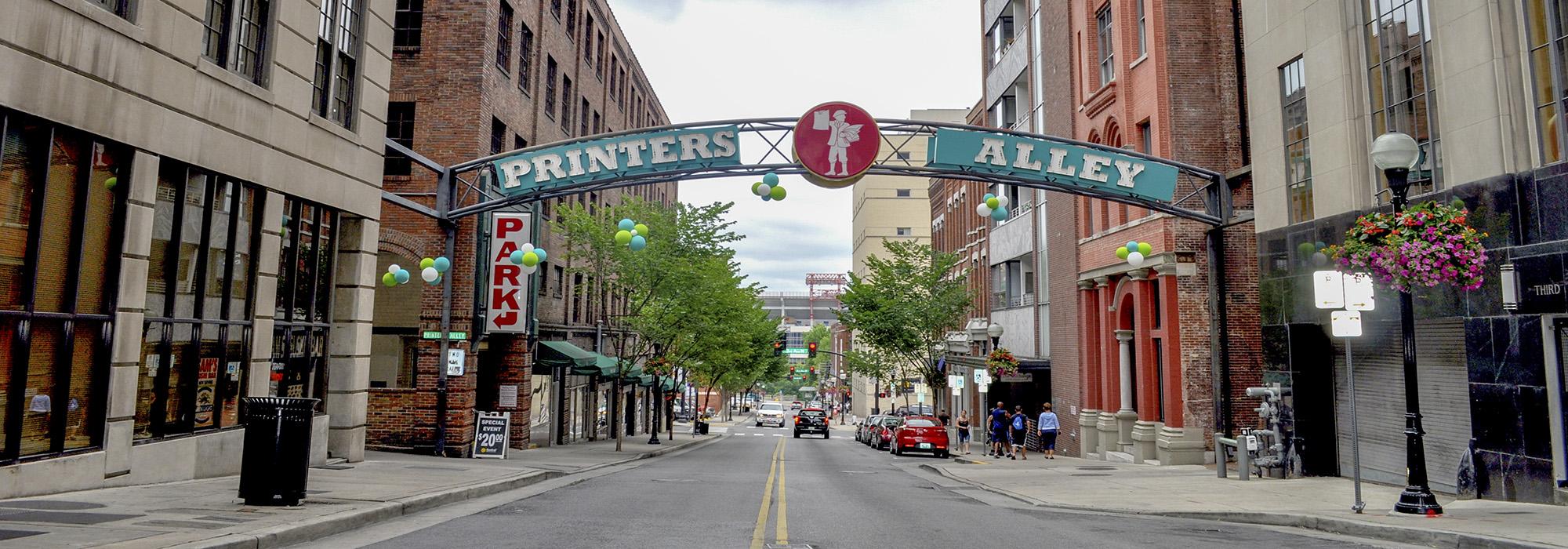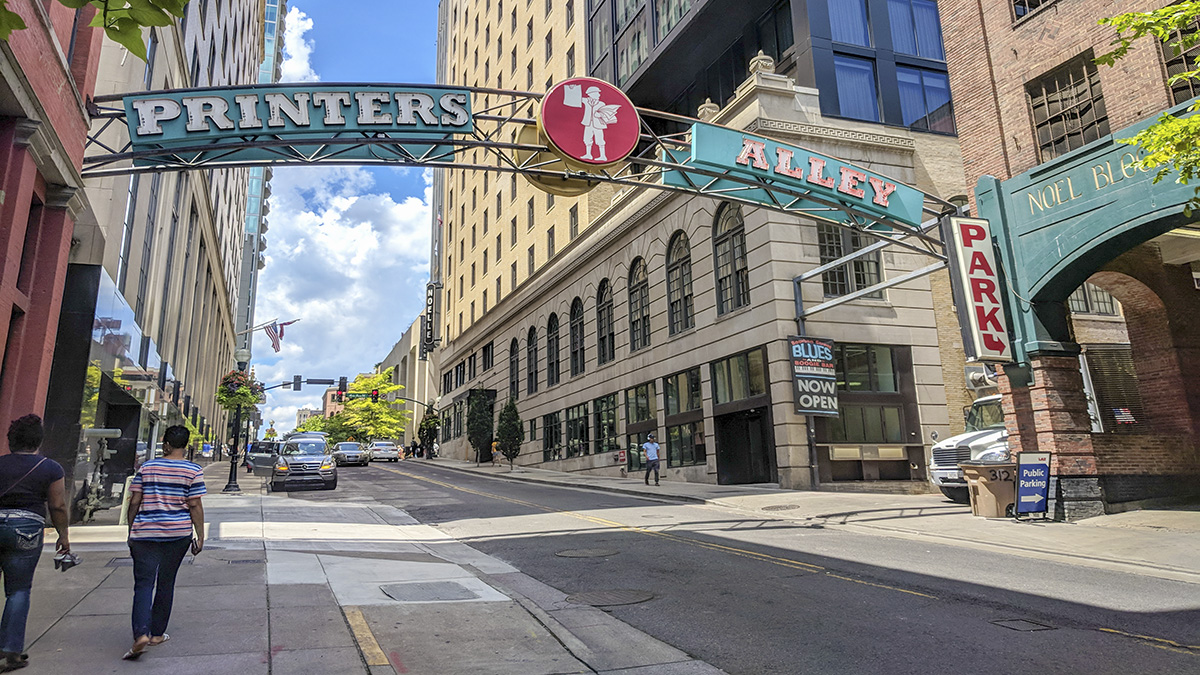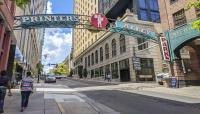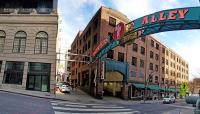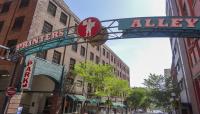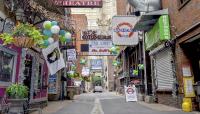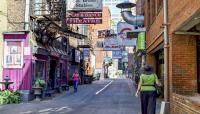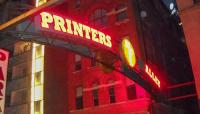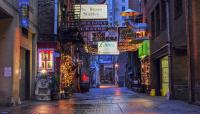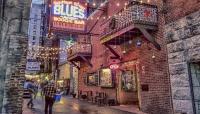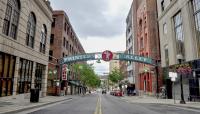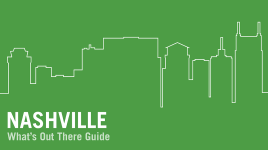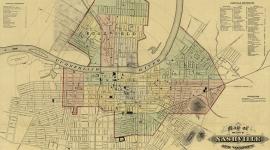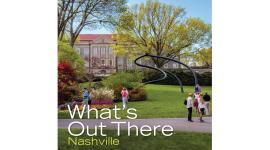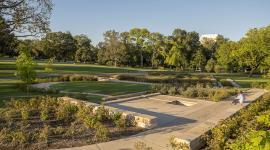Printer’s Alley was the site of the city’s printing industry, which was first established in the 1830s and was thriving by the mid-nineteenth century. The alley was home to thirteen publishers and printers, including offices of the city’s two largest newspapers—the Nashville Banner and The Tennessean. College Street (now Third Avenue) housed eight retail furniture stores, while the Men’s Quarter on Cherry Street (now Fourth Avenue) developed into a block devoted almost exclusively to venues for men, including saloons, billiard halls, restaurants, tobacconists, barber shops, and bath houses. Although the enactment of Prohibition in 1909 curtailed some businesses, several speakeasies continued to operate in the area, with new jazz clubs and bars established in the 1930s.
Bounded by Union Street to the north, Third Avenue to the east, Church Street to the south, and Fourth Avenue to the west, the five-acre Printer’s Alley Historic District comprises fifteen commercial structures dating from 1874 to 1929. These include the U.S. Bank Building (1929), Utopia Hotel (1891), Climax Saloon (1887), Southern Turf Saloon (1895), Ambrose Building (formerly Bruce Building, 1905), and Noel Block Garage (1926). Featuring Italianate, Romanesque Revival, Victorian Romanesque, Queen Anne, neoclassical, and Art Deco commercial architecture, the street is a narrow, paved, pedestrianized service lane lined by brick facades, cast-iron balconies, and foliage overhanging from window boxes. Neon signboards fronting many of the businesses date to the 1940s. Recent attempts to revitalize the district have led to an influx of luxury hotels and other high-end services. Printer’s Alley was added to the National Register of Historic Places in 1977.



